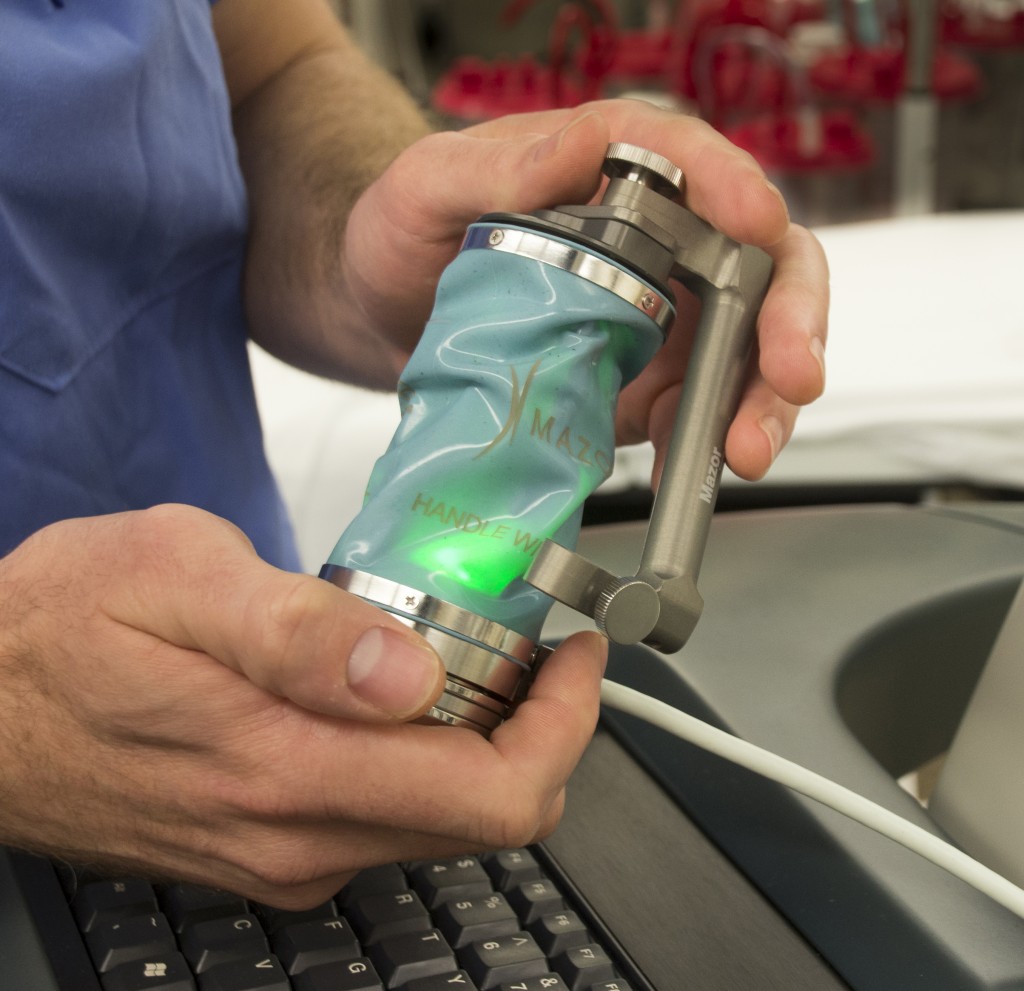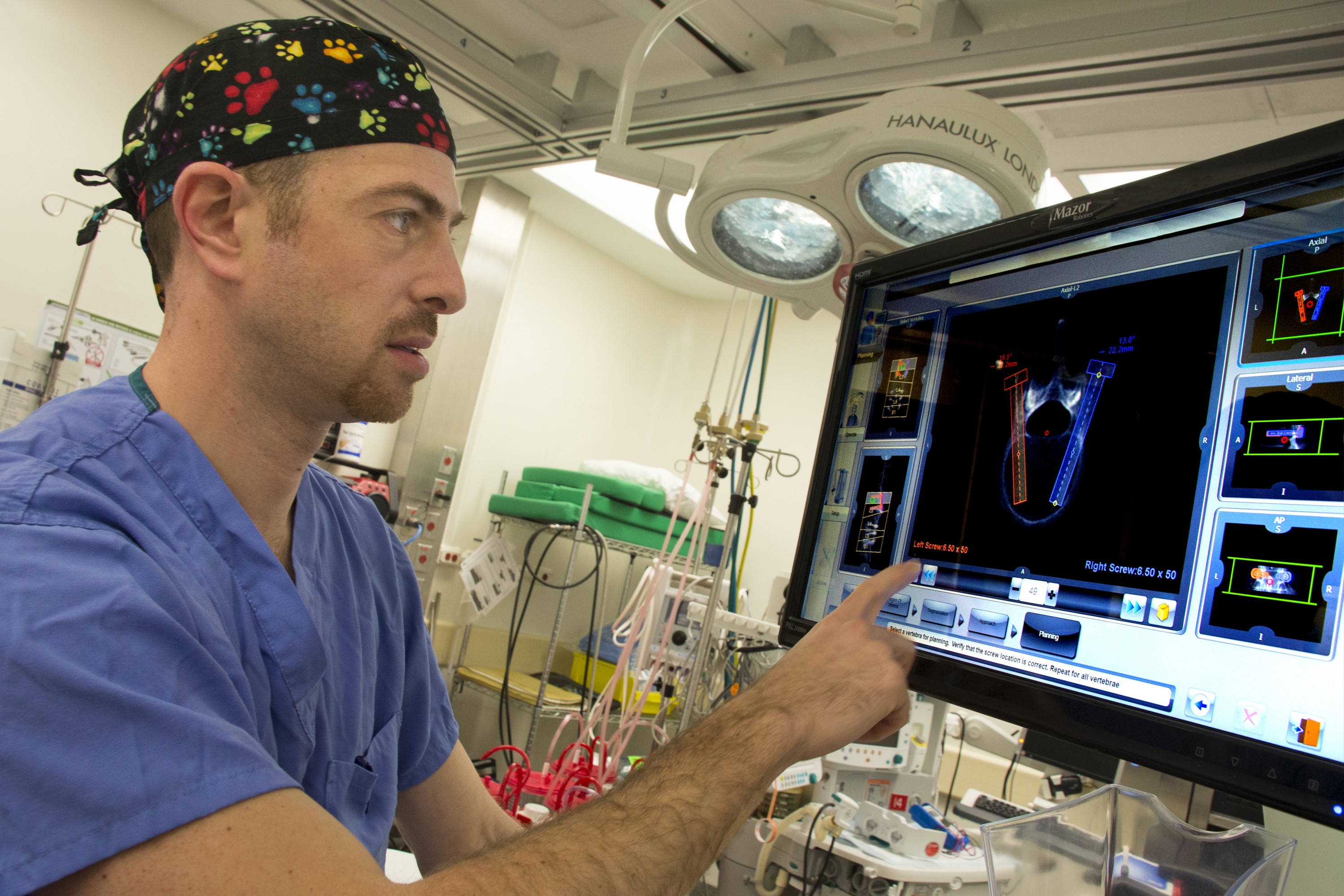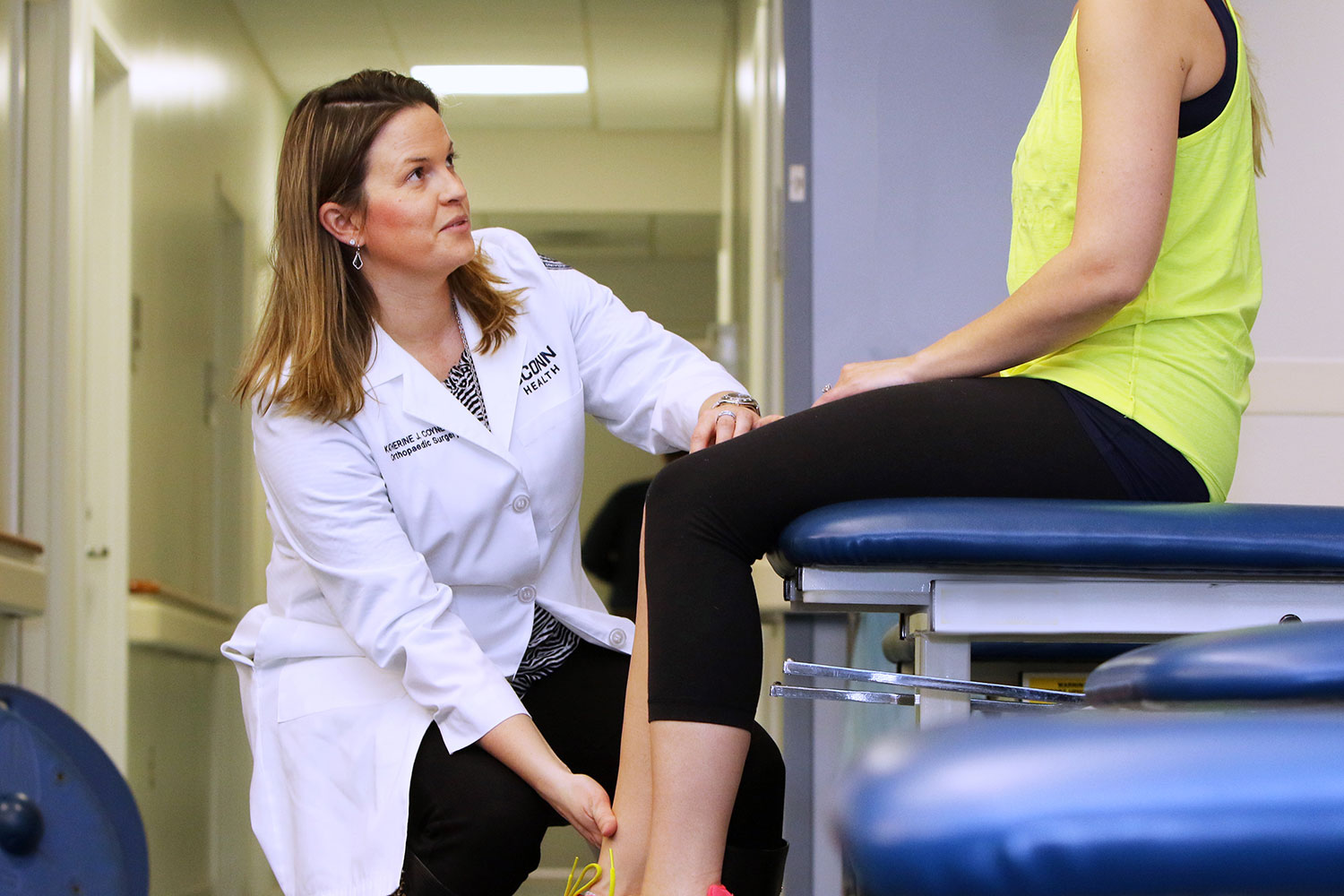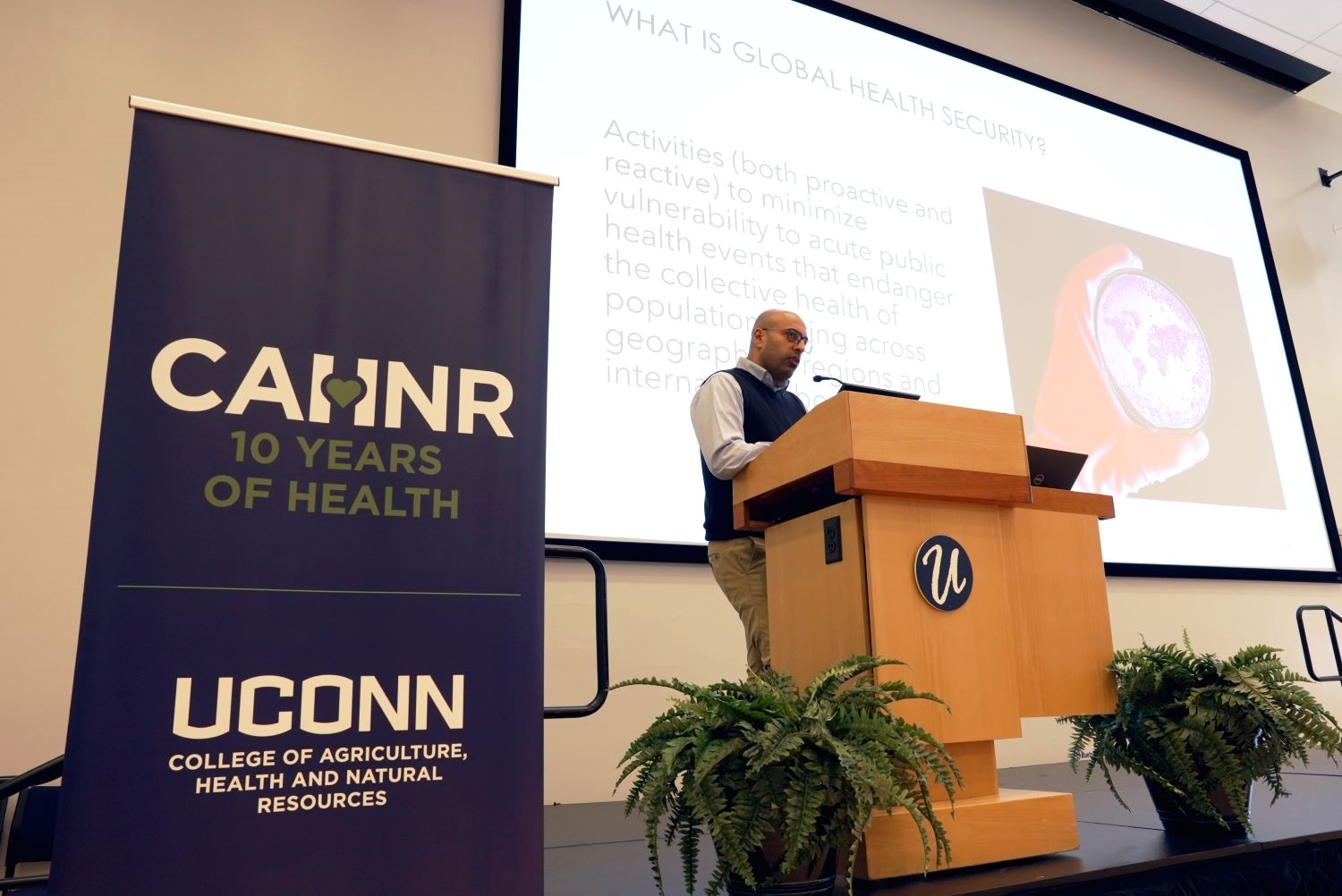The UConn Musculoskeletal Institute at UConn Health is poised to offer patients more precise, pioneering robotic-guided spine surgery, becoming the first and to date only center in New England to do so.
Beginning in January, Dr. Isaac Moss, assistant professor of orthopaedic surgery and neurosurgery at the Comprehensive Spine Center of the UConn Musculoskeletal Institute, will be New England’s and Connecticut’s first surgeon to use the new Mazor Robotics Renaissance Guidance System to assist him during spine surgery at UConn John Dempsey Hospital.

Most spinal procedures involve the attachment of screws and other implants to the spine. Spine surgery has little room for error, as the vertebrae are surrounded by nerves, major blood vessels, and other vital structures. Spinal fixations, such as screws, are typically just millimeters away from sensitive spinal nerves, the spinal cord, the aorta, and other critical vessels.
The new, innovative robotic guidance technology’s software allows surgeons to pre-plan a patient’s spine surgery virtually, using a 3-D simulation of the spinal anatomy based upon their most recent CT scan.
“It’s so important to plan in advance of spine surgery,” says Moss. “The Mazor Renaissance technology allows a surgeon to closely review the anatomy of each patient in depth, and get to know the specifics, to make a more precise surgical plan, and eventually execute a smoother operation.”
Once inside the operating room, the Mazor technology matches, in real time, the surgeon’s pre-operative 3-D plan with intra-operative X-ray imaging of the patient’s spine. During the procedure, the technology guides its robotic arm along the spine to help the surgeon pinpoint the precise location to place his tools to ensure for the greatest accuracy and safe placement of screws and other hardware into the spine.
“Using this latest, first-of-its-kind robotic guidance system at UConn Health, we will be able to perform complex spinal surgeries in an even more precise and effective manner, leading to the best possible outcomes for each of our patients,” says Moss.
UConn Health plans to use the robotic-guidance technology for a wide-range of spinal procedures including biopsies, thoracic and lumbar spinal fusion, and reconstruction for a wide variety of conditions such as scoliosis (abnormal curves in the spinal column), spondylolisthesis (when one vertebra slips forward onto the vertebrae below it), tumors, and trauma, among others.
“Using this advanced robotic guidance technology puts UConn Health on the forefront of spinal surgery,” Moss says. “This technology will allow us to perform both traditional and minimally invasive spine surgeries more effectively and safely.”
Other potential benefits of the robotic guidance technology include smaller incisions, shorter operative times, shorter hospitalization and recovery, less pain for patients, and less exposure to fluoroscopy X-ray radiation during a spine procedure for both a patient and their surgical team.
Research shows that compared to freehand spine surgery, the robotic guidance technology can increase the accuracy of screws and other hardware placement for spine surgery by 1.5 mm. This increased accuracy may also reduce the potential for neurologic risks to patients, which may include future nerve pain, tingling, or tissue numbness.
“UConn Health has a true commitment to bringing excellence and the latest innovation to its surgery patients,” says Dr. Augustus Mazzocca, director of the UConn Musculoskeletal Institute and chairman of the Department of Orthopaedic Surgery at UConn Health.
“This is one of the main reasons our surgeons work at an academic medical center like UConn Health, so we can provide our patients with the latest state-of-the-art treatments and technology such as Mazor Robotics Renaissance.”
Two other UConn Health surgeons in addition to Moss – Dr. Hilary Onyiuke, director of the Comprehensive Spine Center at the UConn Musculoskeletal Institute and chief of the Division of Neurosurgery, and Dr. Ryan Zengou, assistant professor in the Department of Surgery’s Division of Neurosurgery and the Department of Orthopaedic Surgery – plan to use the robotic guidance system.



